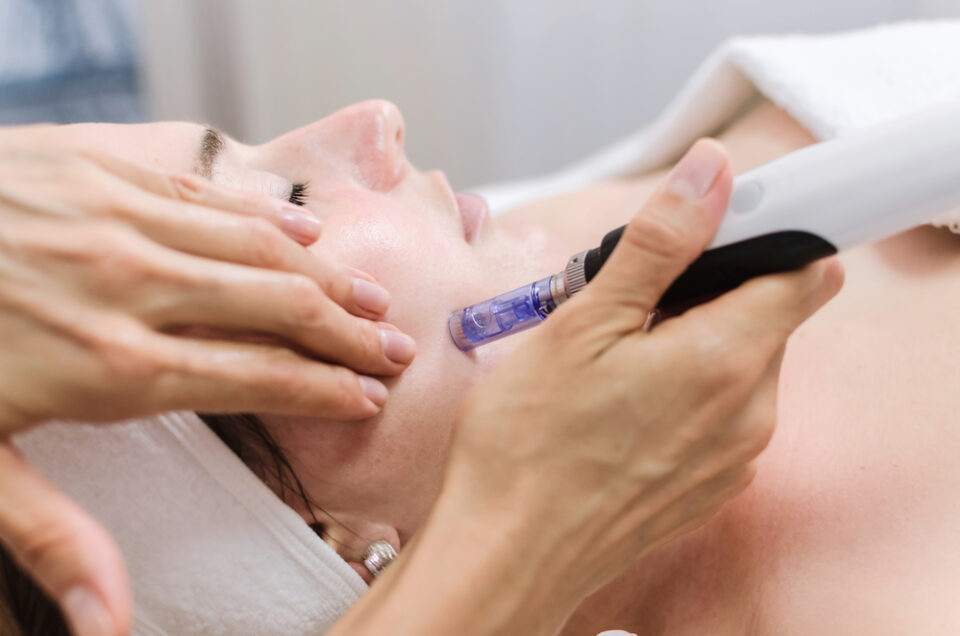Microneedling is an increasingly popular medical procedure that uses tiny needles to create tiny punctures in the skin. This process stimulates the body’s natural healing process, which helps to reduce the appearance of fine lines, wrinkles, acne scars, and hyperpigmentation.
The process of microneedling involves a handheld device with a series of tiny needles that are used to create tiny punctures in the skin. The device is moved across the surface of the skin, creating small punctures that are only a few millimeters deep. The punctures encourage the body to produce new collagen and elastin, which helps to fill in wrinkles and improve the skin’s overall appearance.
The procedure is relatively quick and comfortable, and the results are often visible within a few weeks. In addition to reducing the appearance of wrinkles, microneedling can also help to improve the skin’s texture and elasticity. It can also reduce the appearance of acne scars, sun damage, and hyperpigmentation.
For best results, multiple treatments are typically recommended. The number of treatments needed will depend on the individual’s skin type and the desired results. It is important to note that microneedling can cause some redness and swelling, but these effects usually subside within a few days.
Overall, microneedling is a safe and effective way to improve the appearance of wrinkles, acne scars, sun damage, and hyperpigmentation. It is important to consult with a qualified healthcare professional before starting any treatment, to ensure that it is the best option for you.
Benefits of Microneedling for Skin Rejuvenation
Microneedling has become a popular treatment for skin rejuvenation, and for good reason. This minimally invasive procedure helps improve the appearance of wrinkles, scars, stretch marks, and other skin conditions. By using tiny needles to create controlled micro-injuries in the skin, microneedling encourages the body to produce collagen and elastin, which are important components of healthy skin.
The benefits of microneedling are numerous. It’s a quick and relatively painless procedure, with minimal risk of complications. It can be used to treat a variety of skin issues, including acne scars, wrinkles, enlarged pores, and even to improve skin tone and texture. It’s much less expensive than other skin rejuvenation procedures, such as laser treatments.
Microneedling can be used to improve the appearance of wrinkles and fine lines by stimulating collagen and elastin production, resulting in firmer, smoother, and more youthful looking skin. It can also help reduce the appearance of acne scars, sun damage, and stretch marks. Additionally, microneedling can be used to reduce the appearance of large pores and improve skin texture.
The effects of microneedling can be seen after just one treatment, and the results can last for months. But for best results, multiple treatments may be necessary. It’s important to consult with a professional to determine the best plan for your skin.
Overall, microneedling is an excellent option for skin rejuvenation. It’s minimally invasive, relatively painless, and can provide long-lasting results. If you’re looking for a safe and effective way to improve the appearance of your skin, microneedling might be the right choice for you.
How to Prepare for a Microneedling Treatment?
If you’re considering a microneedling treatment, you may be wondering how best to prepare for your appointment. Microneedling can be an effective way to improve skin texture and reduce the appearance of fine lines and wrinkles, but it is important to go into your appointment feeling comfortable and confident. Here are some tips to help you prepare for your microneedling treatment.
First and foremost, it’s important to discuss your treatment plan with your doctor. This will help them to tailor the treatment to your individual needs, as well as provide you with information about any potential risks or side effects. Additionally, your doctor may advise you to avoid certain activities or products prior to the treatment.
You should also make sure to cleanse your skin before your appointment. This will help reduce the risk of infection and ensure that your skin is properly prepared for the procedure. Additionally, it’s important to avoid using any products that may irritate your skin, such as exfoliants or retinol.
Finally, it’s also a good idea to take some time to relax before your appointment. This can help reduce any anxiety or stress you may be feeling and ensure you’re in the best frame of mind for your treatment. Taking a few deep breaths, meditating, or listening to calming music can all be helpful in this regard.

